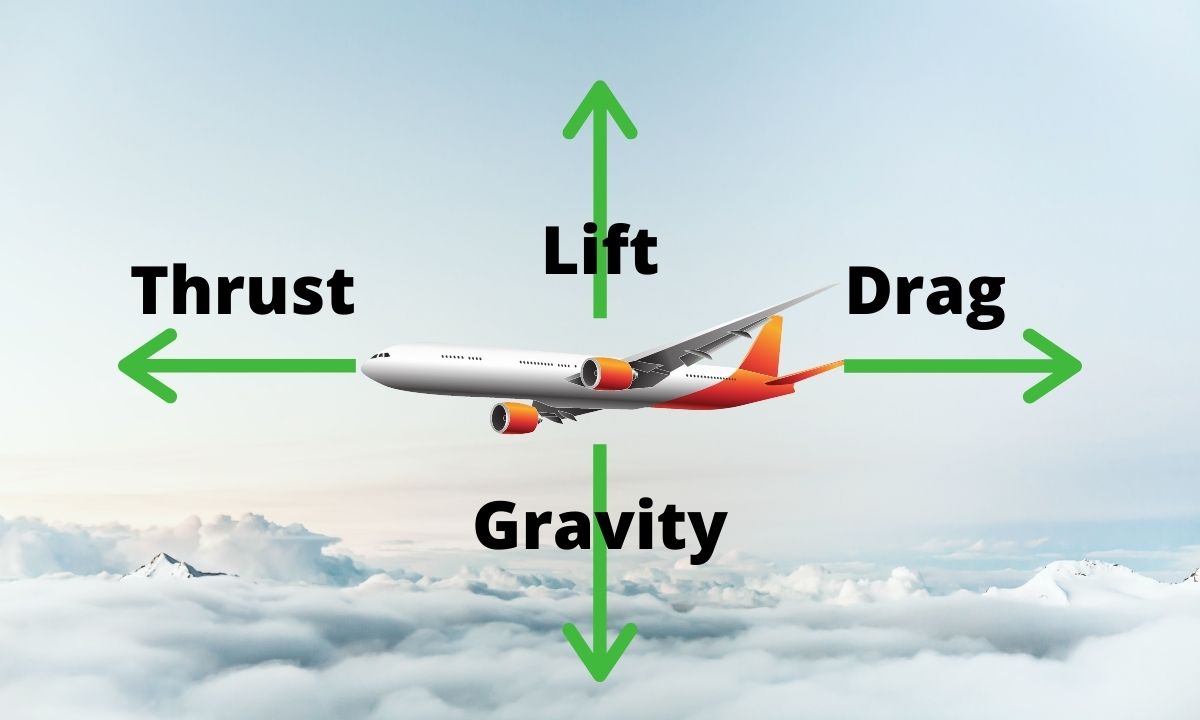How Airplanes fly?-Understanding of physics behind aircraft !

To understand what makes a glider fly, first we must have an understanding of aircraft aerodynamics and how flight is possible.
Many flying machine designs were tested because of the human’s quest to fly in the air. Finally, Wright brothers succeeded in flying. The wings of the aircraft were able to produce the lift force ingenious way.There are several physical descriptions on how lift is produced. The Wright brothers biplane wings had a curved shape, this shape pushes the air downwards resulting a reaction force from air to push the wing upwards in the equal magnitude (Newtons 3rd law). This eventually results in the lift force and aircraft will be able to fly in the air off the ground. Even today the aircraft use the same airfoil technology to fly but with the highly aerodynamically optimized airfoil shape.
There are 4 aerodynamic forces that act on an airplane in flight:

- Lift: upward force(generated by wing)
- Gravity/ weight: downward force(due to weight of the plane)
- Thrust: forward force(power of the airplane’s engine
- Drag: backward force(resistance of air)
A force may be thought of as a push or pull in a specific direction. A force is a vector quantity so a force has both a magnitude and a direction.
1.Weight : Weight is a force that is always directed toward the center of the earth. The magnitude of the weight depends on the mass of all the airplane parts, plus the amount of fuel, plus any payload on board (people, baggage, freight, etc.). The weight is distributed throughout the airplane. But we can often think of it as collected and acting through a single point called the center of gravity. In flight, the airplane rotates about the center of gravity.
2. Lift: To overcome the weight force, airplanes generate an opposing force called lift. Lift is generated by the motion of the airplane through the air and is an aerodynamic force. “Aero” stands for the air, and “dynamic” denotes motion. Lift is directed perpendicular to the flight direction. The magnitude of the lift depends on several factors including the shape, size, and velocity of the aircraft. As with weight, each part of the aircraft contributes to the aircraft lift force. Most of the lift is generated by the wings. Aircraft lift acts through a single point called the center of pressure. The center of pressure is defined just like the center of gravity, but using the pressure distribution around the body instead of the weight distribution.
3. Drift: As the airplane moves through the air, there is another aerodynamic force present. The air resists the motion of the aircraft and the resistance force is called drag. Drag is directed along and opposed to the flight direction.
4. Thrust: To overcome drag, airplanes use a propulsion system to generate a force called thrust. The direction of the thrust force depends on how the engines are attached to the aircraft.
So for airplanes to fly, the thrust must be greater than the drag and the lift must be greater than the gravity ( drag opposes thrust and lift opposes gravity).
This is certainly the case when an airplane takes off or climbs.
However, when it is in straight and level flight the opposing forces of lift and gravity are balanced.
During a descent, gravity exceeds lift and to slow an airplane drag has to overcome thrust.

